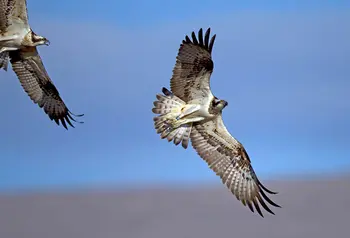Our support for all species, including the unloved

Over the last 27 years, the Heritage Fund has invested more than £1.9billion into landscape and nature projects across the UK. The parks, marine and land habitats, nature reserves and gardens we’ve funded are home to an array of weird, wonderful and vitally important species.
Their role in a healthy ecosystem
Every species plays a significant role in the natural ecosystem, whether it be pollinating our food crops, reducing flooding or decomposing and recycling our waste.
Drew Bennellick, Head of Land and Nature policy at The National Lottery Heritage Fund, said: “Everyone thinks of social media-friendly, photogenic species like puffins, red squirrels and seals, but actually there are hundreds of other, less well-known species that are equally at risk of being lost but just as important in nature.
“They are all a vital part of the UK’s unique natural heritage.”
They are all a vital part of the UK’s unique natural heritage.
- Drew Bennellick, Head of Land and Nature policy
Seven fabulous but forgotten creatures
To give them some much-needed attention, we are shining a light on seven of the UK’s less well-loved species that have received our support.
Pond mud snail
The pond mud snail has a murky brown shell that rarely grows larger than the length of a fingernail. Once widespread, it has declined by almost 50% across its UK range in the last 25 years.
Marvellous Mud Snails, a project by Buglife, ran successfully in Scotland and the southwest of England to tackle their decline.
Common toad
The common toad, known for its ancient associations with witches, princesses and fairy tales, is now much less common. A gardener's friend, sucking up slugs and snails, it is very important to its habitats’ biodiversity.
Froglife is delivering several projects in England and Scotland focusing on protecting its UK population as research shows a 68% decline over the past 30 years.
Flapper skate
The largest skate species in the world, the flapper skate can reach three metres in length and live to 100 years. It is critically endangered and on the brink of extinction
Sea Deep – a shark conservation project led by Ulster Wildlife off the east coast of Northern Ireland – is gathering information to help protect important flapper skate sites.
Smooth snake
Britain’s rarest reptile, the smooth snake is one of just three native species, along with the much better-known adder and grass snake. They live in southern England’s lowland heaths.
The Amphibian and Reptile Conservation Trust is leading a partnership to conserve habitats and train hundreds of volunteers to record and monitor populations.
Sand lizard
These endangered lizards live on sand dunes that are listed as the most at risk habitat in Europe.
Natural England’s innovative partnership project, Dynamic Dunescapes, is restoring nine of the most important sand dune landscapes in England and Wales, allowing one of the UK's rarest reptiles to survive.
European eel
Once a staple diet for Londoners but now critically endangered, European eels spend most of their lives in our freshwater rivers yet start life thousands of kilometres away in the Sargasso Sea.
When young eels reach our rivers, obstacles such as weirs and sluices prevent them from continuing that migration and being able to disperse upstream. Thames Rivers Trust’s Thames Catchment Community Eels Project, funded by Defra through the Green Recovery Challenge Fund (administered by the Heritage Fund), is helping this species survive.
Narrow-headed ant
Once found widely on heathland across southern England, the narrow-headed ant is now very rare and restricted to Scotland and Devon. Queens average a 27-year lifespan and in building its nest it helps to create healthy soil.
Devon Wildlife Trust is working in partnership with Buglife to safeguard their future.
Eyes on the UK for COP26
Ros Kerslake CBE, Chief Executive of The National Lottery Heritage Fund, said: “We have been able to make a very substantial investment in landscape and nature projects thanks to National Lottery funding.
“The importance of this is evident as the world’s eyes will be on the UK, and the steps we are all taking to protect our natural heritage, at COP26.”
Get funding for a nature project
Land and nature organisations have faced significant challenges during the pandemic, but support is available.
Find out how you can apply for our funding for projects that support the UK’s habitats and species, and read about how we expect all projects we fund to embed environmental sustainability into their work.






